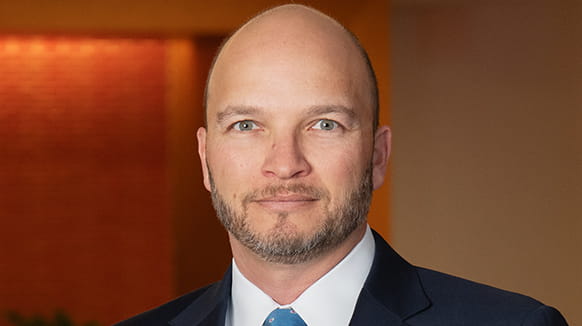Background on PPP and Potential MSLP Loans
In late March, the federal government passed the Coronavirus Aid, Relief, and Economic Security Act (the “Act”), unveiling a number of lending programs and tax relief in response to the COVID-19 pandemic. The Act included the Small Business Administration’s Paycheck Protection Program (“PPP”). The PPP is a federal loan program providing funding up to the lesser of $10 million or 250% of monthly payroll costs to eligible small businesses struggling because of COVID-19. The hallmark of the PPP is that the loan may be fully forgiven if eligible companies follow and meet certain requirements. These requirements aim to encourage small businesses to maintain employment and compensation at pre-COVID levels.
For more information on the PPP, see Bridging the Gap - An Overview of SBA Loans under the Paycheck Protection Program.
Another federal relief program that has not yet been implemented, but that is expected to be popular among mid-size businesses, is the Main Street Lending Program (“MSLP”). On April 9, 2020, the Board of Governors of the Federal Reserve System announced its intention to launch the MSLP to purchase up to $600 billion in loans that are to be made to mid-size businesses that are impacted by COVID-19. The program is expected to consist of three loan facilities – the Main Street New Loan Facility and the Main Street Priority Loan Facility for originating new loans and the Main Street Expanded Loan Facility for increasing or upsizing a company’s existing loans. While there is currently no process in place to obtain a loan under the MSLP, companies (and their secured lenders) are already beginning to evaluate their options.
For more information on the MSLP, see Federal Reserve Board Announces Revised Terms for the Main Street Lending Program.
Permitting a PPP or MSLP Loan Under an Existing Credit Facility
Although PPP and MSLP loans are intended to provide aid to struggling businesses, if a company is subject to an existing secured credit facility, such loans may not be permitted by that credit facility. In such instance, it is important for a secured lender to (i) determine whether its borrower intends to apply for and receive such a loan and (ii) appreciate the terms and requirements its borrower is subject to when it incurs such loan. If a secured lender decides that it should permit its borrower to incur such loan, then the existing loan documents will likely require amendments to properly permit and monitor such loan.
If a secured lender decides to permit its borrower to incur indebtedness under a PPP or MSLP loan, the following amendments to the existing credit agreement should be considered:
- Permit the Indebtedness. If not already covered, a secured lender should specifically permit the new indebtedness as a carveout from its borrower’s negative covenant obligation not to incur or assume any indebtedness. A secured lender may consider only carving out the portion of the indebtedness that it anticipates will be forgiven by a date certain. For example, the parties may establish a “PPP forgiveness deadline” as an incentive for the borrower to apply for forgiveness of its PPP loan in a timely manner to ensure that such indebtedness is forgiven. In such case, a carveout may read that only so long as the secured lender determines that the PPP indebtedness shall be forgiven by the PPP forgiveness deadline, such indebtedness would be permitted under the secured facility.
- Additional Reporting Requirements. To ensure its borrower is complying with the covenants and requirements of the PPP or MSLP loan, a secured lender should request certificates from the borrower, confirming that the borrower has been maintaining and providing the required records, such as documenting all relevant expenses and information to prove eligibility, and otherwise abiding by the terms of its loan, such as keeping proceeds in a separate, segregated account. For example, to receive loan forgiveness under a PPP loan with respect to payroll payments, a company will be required to submit documentation verifying the number of employees at the time of loan application and the time of forgiveness application, as well as the cash compensation paid to such employees during the covered period. Therefore, a secured lender will want to ensure that its borrower is prepared to provide such documentation when it applies for forgiveness by requiring its borrower to deliver estimated amounts of allowable uses of the loan proceeds to the secured lender, with weekly updates until the loan is forgiven setting forth any material changes to such estimated amount.
- Debt Calculation Carveout. With respect to a PPP loan, to the extent such indebtedness has the potential to be forgiven, a borrower may request that a secured lender carve out such forgivable loan amount from the defined terms used in the calculation of the borrower’s debt. This would result in PPP loan indebtedness not being included in broader financial covenant calculations. This request from a secured lender’s borrower is fair because, to the extent such borrower received and is using the PPP loan proceeds in a manner which enables them to be forgiven in full, such amounts arguably never constituted true indebtedness. However, since forgiveness is not guaranteed and requires action on the part of the borrower, a secured lender should include a qualifier that requires any amount of the PPP loan that is not forgiven (or reasonably expected not to be forgiven) to be included as debt of the borrower in financial covenant calculations. In addition, a secured lender should also be sure that the amount of any loan forgiveness is not included as income in its borrower’s calculation of net income or EBITDA.
- Limitations on Payments. A secured lender may want to categorize any amount paid by its borrower (i) in repayment or prepayment of interest or principal of the new indebtedness or (ii) made using proceeds of the PPP or MSLP loan as a “prohibited payment”, so that the secured party can limit the amount or timing of such payments. For example, the secured lender may want to provide that no prepayment be made on the PPP or MSLP loan unless certain “payment conditions” are met.
- Disclaimer. A secured lender may want to add a disclaimer that its borrower did not receive or rely on any advice from such secured lender regarding any PPP loan or MSLP loan.
- Other General Amendments. A secured lender should also include language, or confirm that such language already exists, addressing the application of a cross-default to the PPP or MSLP loan and covenants that prohibit the borrower from amending any material terms of the new PPP or MSLP loan without the consent of the secured lender.




